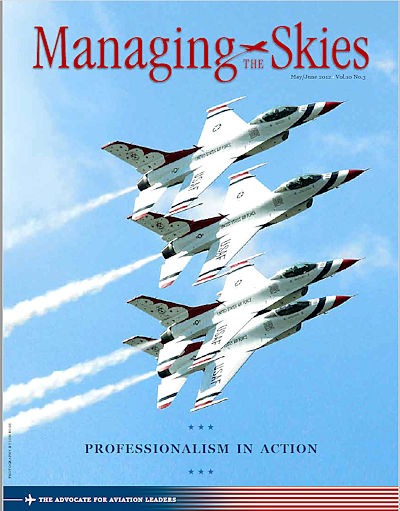
THE KNOWLEDGE GAP
Paraphrased excerpt from The Knowledge Gap: Solid Strategies for Achieving FAA Destination 2025
by Barry Prokop and George Weissenberger (Managing the Skies Magazine, May 2012).
The Washington Post reported that 20 percent of all permanent, fulltime Federal employees will retire in the next two years. Will their knowledge, experience, and wisdom walk out the door with them?
Knowledge retention will play a major role in the success of the FAA’s Destination 2025 as we transition from one set of systems to another. [As generations of] people opt for retirement, they take with them hundreds of years of combined experience. Some managers believe that using existing procedural documents, lessons learned, and the “fresh thinking” of a new generation of employees will be sufficient to sustain the visions outlined for the FAA and for implementing NextGen. However, there is still no substitute for experience. Nor is there a substitute for the knowledge and intelligence garnered through relationships that retiring personnel had with others in the aviation industry and even within the agency.
Retaining Valuable Knowledge
Even if you could keep your people forever, their combined knowledge is only part of the total knowledge you need. Your existing procedural documents help, but they only document what you know. They can’t identify what you don’t know. Nor can those documents tell you how to continue to succeed, avoid failure, change direction, or improve efficiency. This can only be accomplished by utilizing a sound set of business processes. These processes may change the needs, roles, and skill sets of the future workforce, but need not be invasive to your organization.
Business Process Improvement (BPI) helps leverage all of the knowledge and experience of a seasoned staff by having a well-defined business process, knowledge capture methodology, and resource library. The knowledge library should also contain observations, recommendations, and lessons learned; and should have a periodic review process and use procedure. BPI helps identify many elements you must know to stay on schedule and have successful, repeatable results. For example:
- The current way of doing things may not work as efficiently or effectively as they did in the past
- Reorganization (or poor succession planning) can add difficulty in executing a sound process
- Unsynchronized duplication can occur when a number of different groups are performing the same functions
Integrating BPI with Other Business Strategies
While developing sound business processes is a good first step toward sustainable improvement and innovation, several other strategies are needed to integrate a fully-successful work environment and utilize knowledge from alternate sources. For example:
- Collaboration with other organizations, stakeholders, and industry
- Reviewing and revising skill set requirements and alignment
- Communication within the agency, with customers and within your staff
- A proper resource management plan including succession planning based on process
- Proper alignment of work with goals and initiatives
- Technology planning
- Industry forecasting and analytics
Budget Realities
It also is important to recognize the reality of today’s ever-tightening budget environment. Budget constraints require managing resources effectively to maintain the best knowledge pool and functionality, being creative and innovative in managing those resources, and supporting the workforce. Budget constraints impact the way people collaborate with one another. Activities such as telework, distance learning, video conferencing, Internet technology, and social media will play a significant part in knowledge sharing going forward.